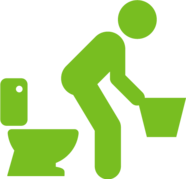|
Welcome to a new format and a fresh plan for sharing news
and information with Minnesota’s Food Safety Partnership. Here are a few
changes you’ll notice:
- Quarterly content is divided into several smaller packages for a quick read.
- You’ll find most information right here – no need to download a PDF.
- More hyperlinks to help you access handy resources on the web.
We hope you enjoy our new approach. Please let us know if
you have comments or suggestions for improvement. You can find PWDU Staff Contact Information at the bottom of this message.
Sarah and the PWDU
team
Back to top
 |
|
Mystery Outbreak! Part 1
On September 11, 2017, the Minnesota Department of Health
Public Health Laboratory used PFGE and whole genome sequencing to identify three
people diagnosed with the same foodborne illness, an infection with “pathogen X.”
All three were from the same region of the state. Over the next 10 days, the
PHL identified 11 additional people with this same illness. By September 22,
MDH epidemiologists had interviewed 11 of these individuals. Seven people
interviewed reported eating at the same fast food restaurant on the north side
of Anytown, Minnesota (“North”).
Read
about their symptoms, conditions in the restaurant and environmental health
interventions below. Then see if you can solve the outbreak!
|
Investigation
MDH epidemiologists worked closely with MDH sanitarians to
discuss what actions were needed at the establishment to stop transmission and
also to piece together what happened.
MDH sanitarians visited the establishment to interview food
employees, check the employee illness log, evaluate food preparation and
handling, and obtain records related to employee work schedules and food sales.
Additionally, managers were asked to thoroughly clean and sanitize the
establishment, and food employees were asked to submit stool samples to the
PHL.
All
36 employees were interviewed at the restaurant. Five employees (none of whom
had reported illness) quit after being interviewed, and refused to provide
stool samples.
Sanitarian observations
When sanitarians conducted the employee interviews, they
identified 12 employees with recent gastrointestinal (GI) illness or fever. These
employees were excluded and required to submit two stool specimens collected 24
hours apart. They were allowed to return to work after two consecutive stool
samples tested negative for pathogen X.
Of the 31 employees who provided at least one stool kit,
five tested positive for pathogen X. One of the workers who tested positive was
initially reported to have quit, but he did submit a stool sample to PHL. The
sample tested positive for pathogen X.
When the employee was called with the report of his results,
he reported that he was now working at a second location of this chain
restaurant, on the south side of Anytown (“South”).
The North kitchen had one handwashing sink. The sink was not
easily accessible from the sandwich cooking and preparation areas. Initially,
workers were seen washing hands before donning gloves, but only limited
handwashing and glove changes were observed during the shift. Employees working
the cash register were not properly washing their hands between tasks. They
were observed making change, filling drinks, bagging food and serving ice cream
without handwashing between tasks.
The
North store manager stated that he had observed employees using gloved hands to
load raw burger patties into the broiler. The restaurant’s procedure calls for
using tongs. Using gloved hands creates and additional possibility of
cross-contamination to cooked burgers, buns or other items.
|
Symptoms
For this investigation, MDH epidemiologists identified a
total of 37 confirmed cases and 10 probable cases. A confirmed case was defined
as a person infected with pathogen X, as determined by whole genome sequencing
and PFGE. A probable case was defined as a person who experienced diarrhea
(three or more stools in a 24-hour period) lasting three or more days, or who
had diarrhea accompanied by a fever after eating at either North location or the
South location.
Symptom histories were collected from 29 of the confirmed
cases. All reported diarrhea, 24 (92 percent) cramps, 12 (41 percent) blood in
stool, and 9 (37 percent) vomiting.
Median
incubation for the three confirmed cases with a known meal and onset date and
time was 55 hours (range, 27 to 170 hours). The incubation period was also
approximately two days for those that could not recall a specific meal date.
|
|
 |
The solution
Did
you think this was an outbreak of Salmonella?
If so, pat yourself on the back; you are correct! Pathogen X was, in fact, Salmonella Heidelberg. But, the story
doesn’t end here. Part 2 of this Mystery Outbreak is coming soon!
Back to top
|